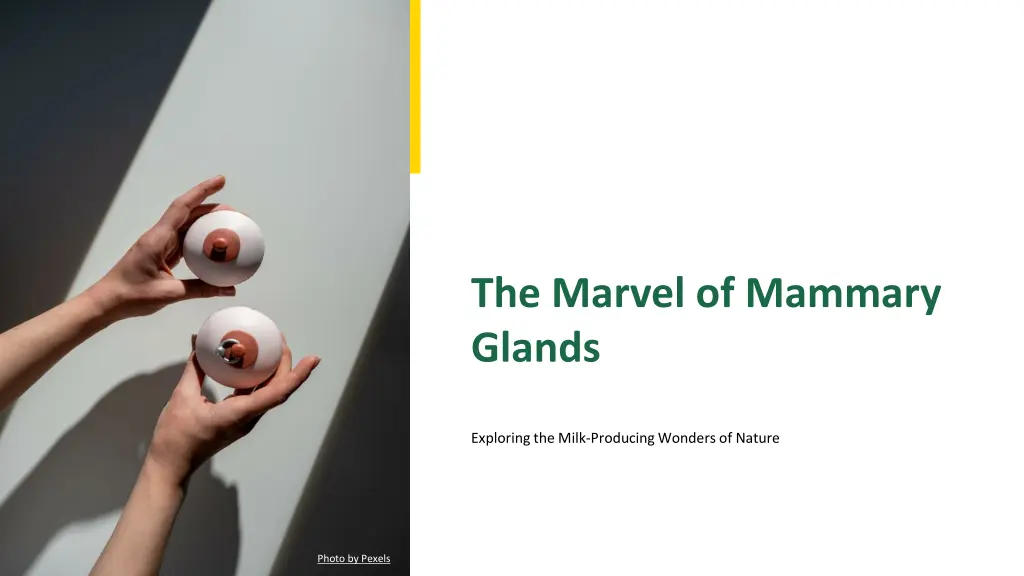
Unveiling the Marvels of Mammary Glands: A Comprehensive Exploration
Delve into the fascinating world of mammary glands, essential milk-producing organs in female mammals. Explore their anatomy, milk production process, evolutionary significance, and future research implications. Discover the wonders of nature's nurturing mechanisms.
Download Presentation

Please find below an Image/Link to download the presentation.
The content on the website is provided AS IS for your information and personal use only. It may not be sold, licensed, or shared on other websites without obtaining consent from the author. If you encounter any issues during the download, it is possible that the publisher has removed the file from their server.
You are allowed to download the files provided on this website for personal or commercial use, subject to the condition that they are used lawfully. All files are the property of their respective owners.
The content on the website is provided AS IS for your information and personal use only. It may not be sold, licensed, or shared on other websites without obtaining consent from the author.
E N D
Presentation Transcript
The Marvel of Mammary Glands Exploring the Milk-Producing Wonders of Nature Photo by Pexels
01 Introduction to Mammary Glands Table of Contents 02 Anatomy of Mammary Glands 03 Milk Production Process 04 Mammary Glands in Evolution 05 Future of Mammary Gland Research
1 Introduction to Mammary Glands Understanding the Basics Mammary glands are milk-producing organs found in all female mammals, essential for nurturing offspring. In males, mammary glands exist in a rudimentary form and are generally nonfunctional. These glands are a defining characteristic of mammals, setting them apart from other animal classes. Mammary glands play a crucial role in the reproductive process by providingnourishmentto the young. Photo by Pexels
2 Anatomy of Mammary Glands Structure and Function Composed of lobes and lobules, glandular tissue is responsible for milk production. A network of ducts transports milk from the lobules to the nipple. Connective tissue and fat provide structure and support to the mammary glands. Rich blood supply ensures nutrients and hormones reach the glands for milk production. Photo by Pexels
3 Milk Production Process From Hormones to Nourishment Hormones like prolactin and oxytocin regulate milk production and ejection. Lactation involves stages of colostrum production, transitional milk, and mature milk. Milk contains essential nutrients, antibodies, and enzymes vital for infant growth. Breastfeeding offers health benefits for both mother and child, promoting bondingand immunity. Photo by Pexels
4 Mammary Glands in Evolution A Journey Through Time Mammary glands evolved from sweat glands, adapting to nourish young mammals. Different mammals exhibit variations in gland structure and milk composition. Mammary glands have adapted to meet the nutritional needs of diverse environments. The evolution of mammary glands has been pivotal in the success and diversity of mammals. Photo by Pexels
5 Future of Mammary Gland Research Innovations and Discoveries Ongoing studies aim to understand and treat breast cancer, a major health concern. Biotechnology explores synthetic milk production and breast tissue engineering. Research continues to uncover the complexities of lactation and its health implications. Efforts are underway to promote breastfeeding and improve maternal and child health worldwide. Photo by Pexels
